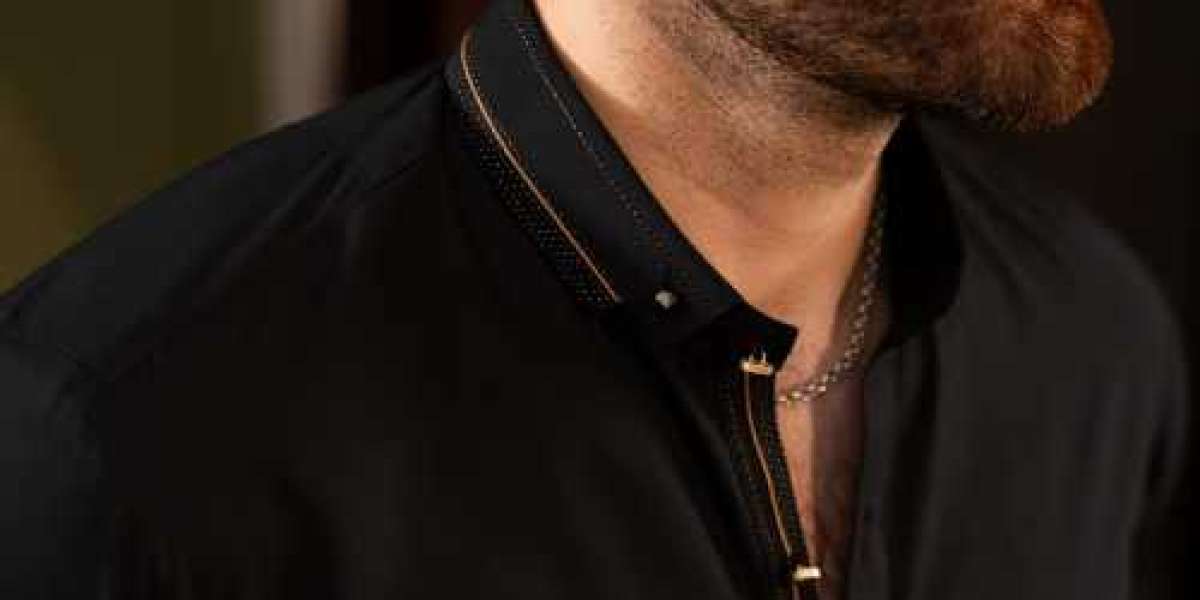History of black shlwar kameez with waistcoat
1. Origins and Evolution of Shalwar Kameez
- Historical Roots
The shalwar kameez with waistcoat, traditionally comprising loose trousers (shalwar) and a tunic (kameez), has origins tracing back to Central Asia and Persia, where similar garments were worn as early as the 6th century BCE. This attire provided comfort, ease of movement, and modesty, qualities highly valued in various regions. As Central Asian empires expanded, the style spread into the Indian subcontinent.
- Adoption in South Asia: With the arrival of the Mughal Empire in the 16th century, shalwar kameez became more prominent across South Asia. Mughal clothing practices influenced the local attire, blending with traditional South Asian dress forms. The shalwar kameez gained popularity as it adapted to regional styles, fabrics, and colors. Men and women across Pakistan, India, and Afghanistan wore versions of this attire, which would later become part of the cultural identity of these regions.
- Development of Black as a Color Choice: Black, historically associated with strength, power, and mystique, became a popular color in South Asian clothing over time. In traditional South Asian societies, colors often held specific meanings—white symbolized purity, red represented marriage, while black was commonly linked to power or solemnity. By the 20th century, black began to gain popularity as a stylish and elegant color for formal wear, and the black shalwar kameez emerged as a go-to choice for those seeking an aura of sophistication.
2. Significance of the Waistcoat
- Historical Usage of Waistcoats
The waistcoat originated in Europe in the 17th century and was initially worn as a part of formal, multi-layered suits. Introduced into South Asia during British colonial rule in the 18th and 19th centuries, the waistcoat was eventually adopted and adapted by South Asian men, evolving from a foreign concept to a part of traditional dress. Initially, it was worn over Western suits but soon integrated into South Asian attire, including the kurta and shalwar kameez, symbolizing a blend of formality and cultural pride.
- Adaptation into Traditional Attire: Over time, the waistcoat was tailored to better complement shalwar kameez, often featuring local fabrics, embroideries, and cuts that reflected South Asian aesthetics. It became an essential component of formal and semi-formal attire, adding a layer of sophistication to the outfit. The waistcoat gained particular popularity in Pakistan, where it became a cultural staple for weddings, religious festivals, and other celebratory events. Unlike the European waistcoat, which was usually form-fitted, the South Asian version was designed to be more relaxed and comfortable.
Attention:The combination of modern and traditional elements embodied in the shalwar kameez with waistcoat allowed people to feel both globally modern and locally connected, adding to its widespread appeal.
3. Influence of Black Shalwar Kameez in Culture and Media
- Film and Media Influence: In the mid-to-late 20th century, black shalwar kameez with a waistcoat became a common outfit in Pakistani and Indian films, often worn by male leads to depict a strong, respectable character. Iconic actors were seen donning the attire, solidifying its place as a symbol of masculinity and cultural pride. Media personalities and actors helped popularize this attire among youth and adults alike, as they represented strength, patriotism, and confidence through their style.
- Fashion Icons and Trends: In the 1980s and 1990s, public figures, including politicians, leaders, and celebrities, began embracing the black shalwar kameez with a waistcoat, making it a trendy yet respectable choice for formal and semi-formal events. These figures not only promoted the attire as fashionable but also as a part of the national identity, especially in Pakistan, where it became closely associated with the traditional dress of the country.
4. Symbolism and Social Connotations
- Symbol of Formality and Power Over time, black shalwar kameez with a waistcoat became synonymous with formality and respectability. The waistcoat added an element of structure and decorum, making the attire suitable for a variety of occasions, from weddings and religious gatherings to political events and formal meetings. The choice of black as a color enhanced this impression, as it signified a certain level of gravitas and dignity. For young men, wearing this attire was often seen as a rite of passage, symbolizing a transition into adulthood.
- Cultural Identity: As South Asia underwent political transformations and sought to reclaim its cultural identity, traditional clothing like the black shalwar kameez became symbols of pride and heritage. Many individuals in Pakistan, India, and Afghanistan wore it to show a sense of unity and connection to their roots. The combination of modern and traditional elements embodied in the shalwar kameez and waistcoat allowed people to feel both globally modern and locally connected, adding to its widespread appeal.
5. Modern-Day Popularity and Variations
- Current Fashion Trends
The black shalwar kameez with a waistcoat remains one of the most versatile traditional attires in South Asia, with designers introducing a wide array of modern variations to suit different occasions and individual styles. Common enhancements include intricate embroidery, metallic buttons, contrasting waistcoat colors, and fitted cuts, which cater to modern tastes while preserving the traditional appeal. This attire is especially popular at weddings, religious celebrations, and festivals, as it allows wearers to look sophisticated yet rooted in their culture.
- Global Influence: The South Asian diaspora has played a significant role in making traditional attire more accessible and celebrated worldwide. South Asians living in Europe, North America, and the Middle East have embraced the black shalwar kameez with a waistcoat as part of their formal wardrobe, donning it at weddings, cultural festivals, and even global events. This attire now represents not just South Asian heritage but also the fusion of traditional values with modern global identity.

